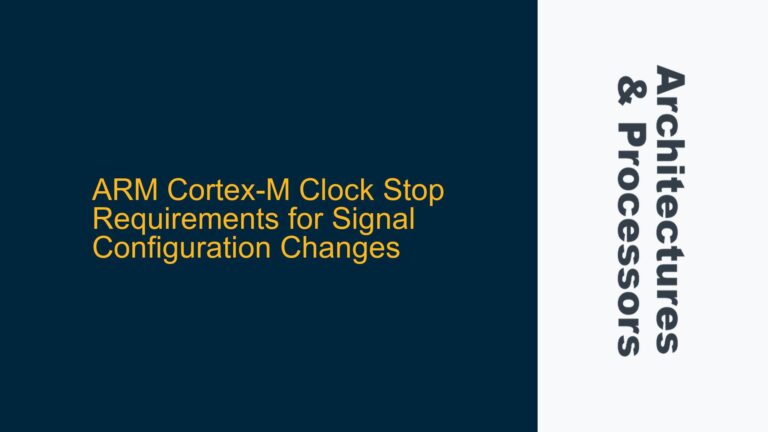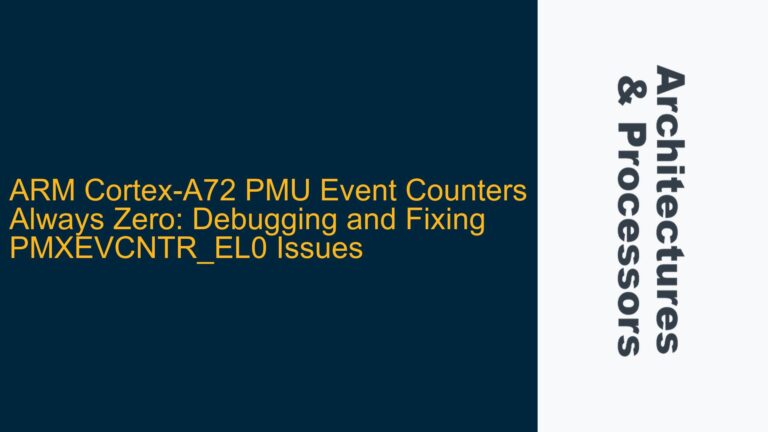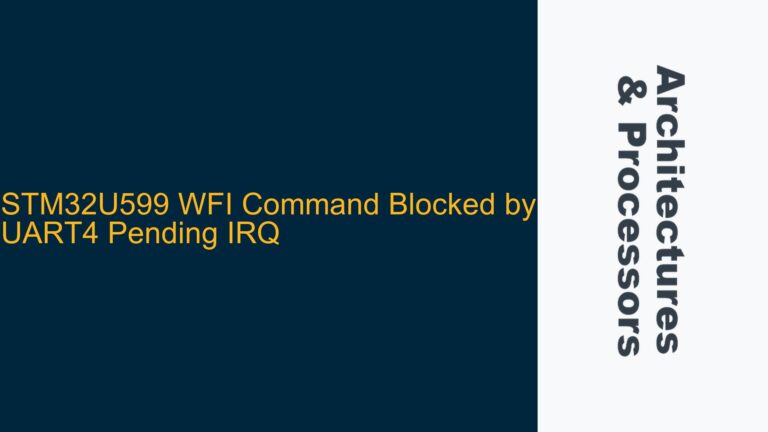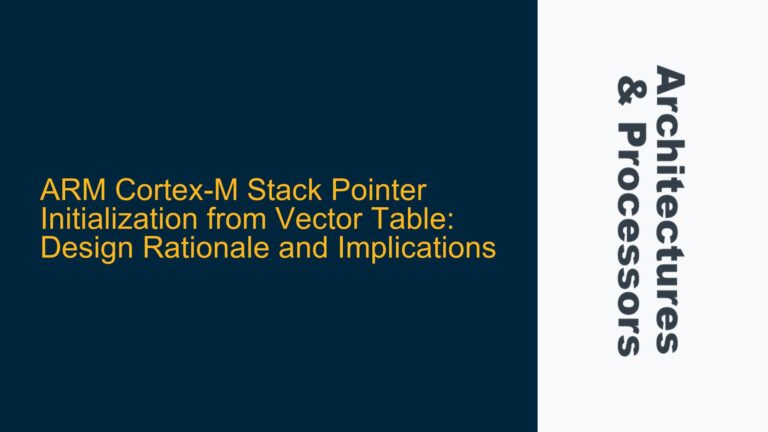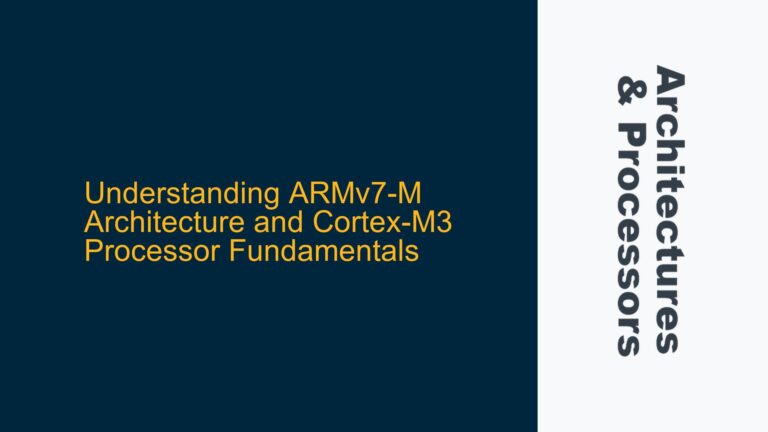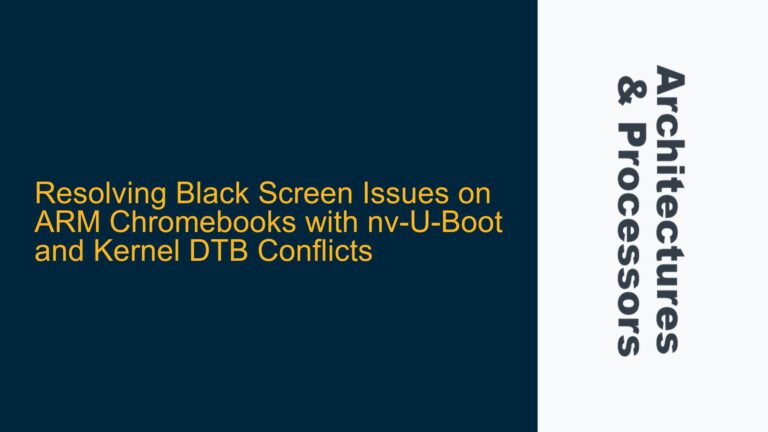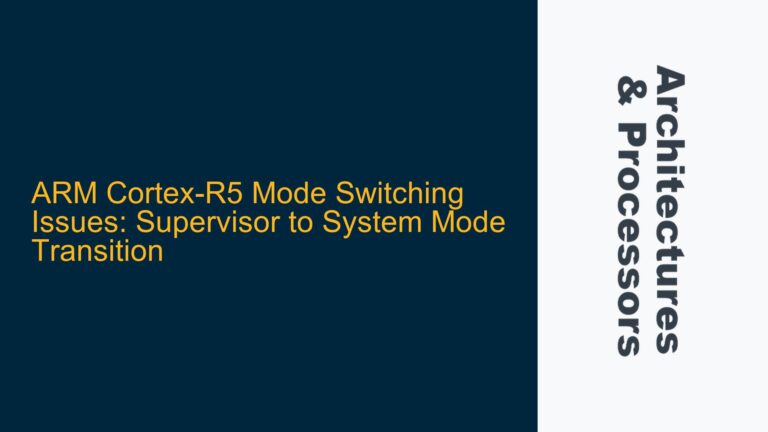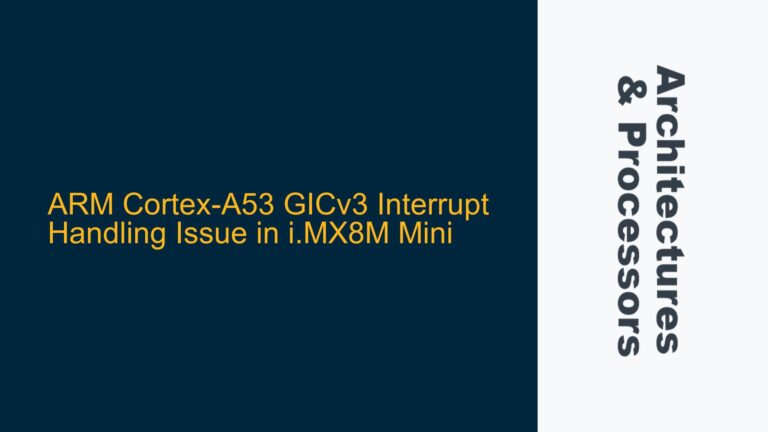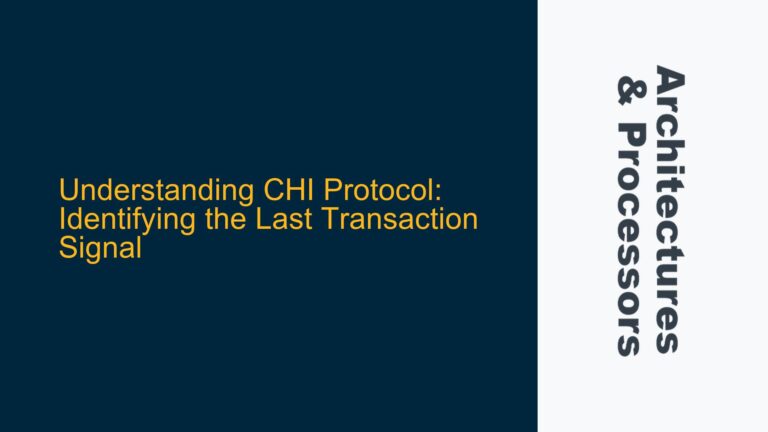ARM Cortex-M Clock Stop Requirements for Signal Configuration Changes
ARM Cortex-M Clock Stop Requirements During Signal Reconfiguration When working with ARM Cortex-M processors, particularly during low-power or system reconfiguration scenarios, it is often necessary to stop the CPU clock temporarily to modify certain critical signals such as reset, clamp, and EMA (External Memory Access) signals. This requirement arises from the underlying architecture and timing…
